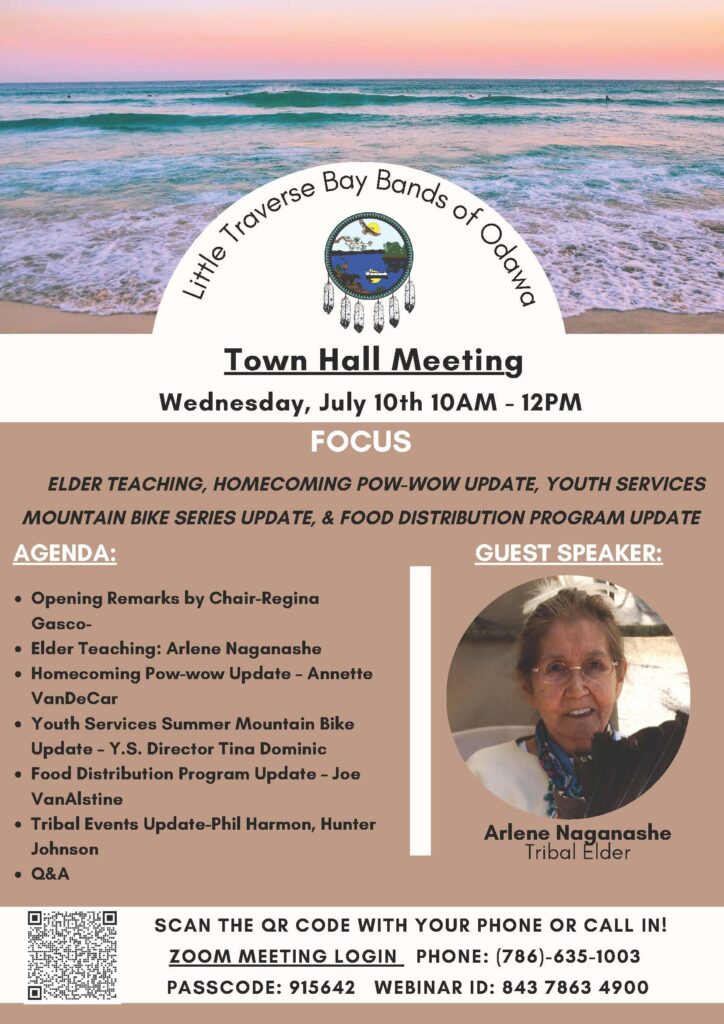General Election: June 28, 2021 Candidates for Tribal Council
RICKY COMPO
TAMARA KIOGIMA
LEROY SHOMIN
DOUG EMERY
WILLIAM ORTIZ
MARCI REYES
KENNETH DEWEY
AARON OTTO
SHARON SIERZPUTOWSKI
SIERRA BODA (WITHDREW 5-14-21)
Table 3 provides a listing of monitored lakes, rivers, streams, and creeks in the LTBB reservation, a water quality data summary, and notes on impairments. Note that presentation of the water quality monitoring data in a summarized format does not include the more detailed analyses and information that are presented in the text. Water quality in monitored lakes ranged from impaired to excellent (Table 3). The most significant issues are fish tissue concentrations of mercury and PCBs and temperature in some of the shallower lakes. Elevated conductivity in some lakes may be linked to disturbance of natural marl substrates by boat motors and other activity.
Water quality in rivers and streams was found to be generally good to excellent, with scattered impairments. Water quality on tribal lands is affected by hydromodification and habitat alteration (i.e., alteration of channels and riparian areas), nonpoint source pollution (i.e., polluted runoff) from roadways and other developed areas, temperature, and fish tissue concentrations of mercury and PCBs. Tribal staff have documented that roadway stream crossings and channel modifications, in the form of culverts, bridges, or dredging, are causing erosion, obstructing fish passage, and resulting in warm temperatures and elevated nutrient concentrations at some locations. Channel modification and high temperatures affect river and stream fisheries because fish cannot find spawning and hiding places in streams with thick deposits of sediment, nor can they survive and reproduce above threshold temperatures.
A total of 152 river and stream impairments on and adjacent to tribal lands were noted, with approximately half resulting from alteration of channels and riparian areas. Stormwater runoff from urban areas is the second leading cause of impairment, followed by transportation infrastructure (including road maintenance), atmospheric deposition, agriculture/aquaculture, and marinas/boating (Table 3). The Crooked River watershed, which flows toward Lake Huron, has the most impairments, with 33 impaired reaches.
Although Michigan DEQ water quality uses and associated standards provide a basis for summarizing LTBB’s water quality conditions, Michigan’s uses do not address all of LTBB’s tribal waterbody uses, such as cultural uses, ceremonial uses, and subsistence fishing.
According to the 2014 LTBB citizen survey, water quality, rivers, and lakes was one of the top five issues that tribal citizens said need laws and regulations developed by the tribe. LTBB water quality standards would protect LTBB waters from pollution while addressing our specific tribal water resource uses. Our own tribal water quality standards will help to ensure LTBB’s waters remain in very good condition to support our cultural and recreational uses for the next seven generations.
In addition to these Tribal Uses, an antidegradation policy will be applied to Tribal waters. Antidegradation requirements provide for the protection of existing water uses and limitations on degradation of high quality waters. Water bodies monitored by the LTBB Surface Water Quality Protection Program will be assigned specific use designations.
Indigenous Aquatic Life and Wildlife (IAW)- supporting a population of indigenous aquatic life originating, living, growing, or occurring in a particular water body or indigenous wildlife populations that utilize the water body for subsistence, sustained growth and and/or propagation.
Other Aquatic Life Uses Include:
Coldwater Fishery (CF) – Support cold water fish species that prefer clear, cold waters; are not tolerant of extreme temperature or dissolved oxygen changes.
Cool water Fishery (CLF) – Support cool water fish species that prefer cooler waters and are not tolerant of extreme temperature or dissolved oxygen changes.
Warm water Fishery (WF) – Waters which support or are managed for populations of warm water fish species and lack significant populations of salmonid fishes.
Warm water Fishery with principal migratory routes for anadromous salmonids (WFMAS) – Waters which will support populations of salmon and trout during spawning runs in rivers, creeks, or streams.
Subsistence Fishery (SF)-waters fished by indigenous people to provide food for their families, community, or for traditional/cultural purposes (is a human health and cultural use as well).
Human Health Uses Include:
Primary Contact (PC) – any activities normally involving direct contact with water to the point of complete submergence, particularly immersion of the head, with considerable risk of ingesting water.
Secondary Contact (PSC) – any activities normally involving direct contact of some part of the body with water, but not normally involving immersion of the head or ingestion water.
Public Water Source Supply (PWS) –surface waters with conventional treatment can be used as a source of drinking water.
Cultural Uses Include:
Wild Rice Areas (WRA) – any waters thereof, presently has or historically had the potential to sustain the growth of wild rice (Manoomin) for either wildlife or human subsistence.
Traditional, Cultural, or Ceremonial Uses (TCCU) –any waters that support traditional, cultural, and/or ceremonial practices by indigenous people.
Other Uses Include:
Navigation Uses (NU) –any waters suitable for moving on, thru, or used for following a route.
Commercial Uses (CU) – Use of water for the creation, selling, or trading of a good or service.
Industrial Uses-any waters used for the production, manufacture, or construction of a long term, large scale, and/or standardized activity, good, or service.
Aquaculture Uses (AQ)- use of any waters for the cultivation or farming of any aquatic organisms such as but not limited to fish, mollusks, crustaceans, algae, or aquatic plants.
Agriculture Uses (AG) – waters used for irrigational purposes, livestock watering, and/or any other farming practices involving the use of water.
RICKY COMPO
TAMARA KIOGIMA
LEROY SHOMIN
DOUG EMERY
WILLIAM ORTIZ
MARCI REYES
KENNETH DEWEY
AARON OTTO
SHARON SIERZPUTOWSKI
SIERRA BODA (WITHDREW 5-14-21)
BERNADECE (BERNIE) BODA & LINDA GOKEE
REGINA GASCO-BENTLEY & STELLA KAY
(Click Team To Read Their Statements)
BERNADECE (BERNIE) BODA & LINDA GOKEE
REGINA GASCO-BENTLEY & STELLA KAY
(Click Candidate Name To View Their Statement)
Search Code Index
function search(string){ window.find(string); }
LTBB Events
Sun Mon Tue Wed Thu Fri Sat 

Contact SPRING
[ninja_form id=12]
https://app.hellosign.com/s/LJki90VA